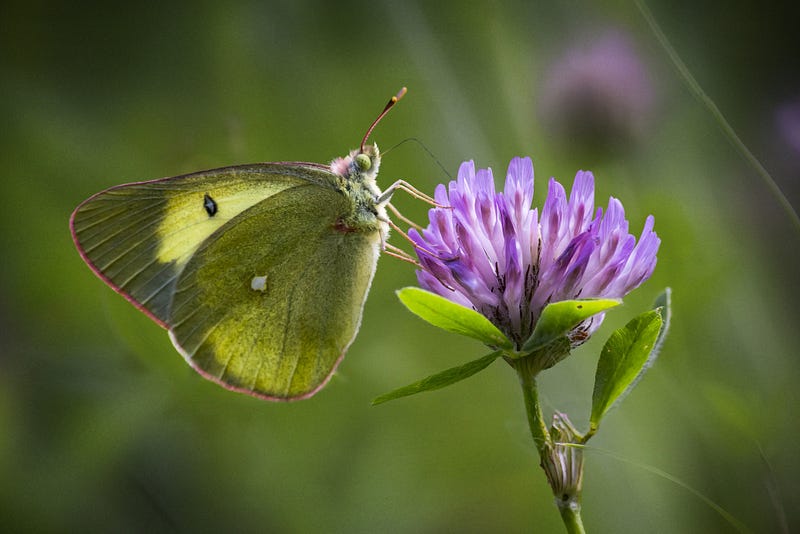Butterfly and Plant: How to Attract Pollinators Naturally
Want to attract butterflies and hummingbirds to your garden? Creating a welcoming space for pollinators is essential, especially with declining populations of butterflies, bees, and other key species. By choosing the right plants, you can transform your outdoor space into a thriving pollinator paradise.
The bond between butterflies and plants is vital to both their survival and the health of our ecosystems. Understanding this relationship helps you choose the best plants for your garden and support pollinators naturally.
Introduction to Pollinator Gardening
Starting a pollinator garden is both rewarding and impactful. It begins with the right plant choices — especially nectar-rich flowers and host plants that provide food and shelter for pollinators.
Organizations like the Natural Resources Defense Council (NRDC) offer excellent guidance for building pollinator-friendly gardens that attract butterflies and hummingbirds while helping conserve these essential creatures.
Key Takeaways
- Choose nectar-rich flowers and host plants to attract butterflies and hummingbirds.
- Understand the butterfly–plant relationship to create a thriving ecosystem.
- Use native plants for better resilience and easier care.
- Avoid harmful pesticides like neonicotinoids.
- Plant a variety of species that bloom in different seasons.
- Be patient — some plants, like milkweed, take time to establish.
Understanding the Butterfly and Plant Relationship
Butterflies and plants share a mutualistic relationship. About 10% of the world’s flowering plants rely on butterflies for pollination. Learning about their role can help you choose the best plants for your garden.
For instance, Monarch butterflies lay their eggs exclusively on milkweed, making it essential for their survival. Butterflies also favor nectar-rich flowers, such as Zinnias, which provide nectar up to 80% of their bloom time. Many of these flowers even have ultraviolet patterns that butterflies can see, helping guide them to nectar sources.
Top Butterfly and Hummingbird Plants:
- Butterfly Bush (Buddleja)
- Milkweed (Asclepias)
- Zinnias
Creating Your Pollinator-Friendly Garden Design
A beautiful, pollinator-friendly garden combines function with form. Use a mix of annuals, perennials, and shrubs to ensure blooms throughout the season. Flower shape and color also matter — tubular flowers attract hummingbirds, while flat, open blooms appeal to butterflies and bees.
Tips for Designing a Pollinator Garden:
- Choose native plants adapted to your region.
- Include both early- and late-blooming species.
- Provide water sources like shallow dishes with rocks.
- Avoid pesticides that harm pollinators.
Essential Plants That Attract Butterflies and Hummingbirds
To create a welcoming environment, include native flowers, nectar-rich plants, and host plants for caterpillars. These selections offer both food and shelter.
Top Pollinator-Friendly Plants:
- Salvia
- Lupine
- Columbine
- Bee Balm
- Morning Glory
- Four O’Clock
- Petunias
- Sunflowers
- Dahlias
- Cosmos
For continuous attraction, select plants with staggered bloom times to provide a steady nectar supply throughout the growing season.
Best Perennial Options for Year-Round Appeal
Perennial plants offer long-lasting beauty and consistent resources for pollinators. They return year after year and require less maintenance.
Top Perennials for Pollinators:
- Coneflowers (Echinacea)
- Black-eyed Susans (Rudbeckia)
- Bee Balm (Monarda)
- Butterfly Bush
- Milkweed
- Aster
These plants attract butterflies, hummingbirds, and bees while supporting caterpillars and other life stages of pollinators.
Designing a Butterfly and Hummingbird Sanctuary
A true pollinator sanctuary goes beyond planting — it involves thoughtful design. Grouping plants increases visibility and accessibility for pollinators.
Key Elements of a Sanctuary:
- Plant in clusters to create more impact.
- Provide water sources (e.g., birdbaths, shallow dishes).
- Include shelter like trees, shrubs, or brush piles.
- Avoid chemical treatments and use organic gardening methods.
Plants like catmint, cosmos, zinnia, and butterfly weed add vibrant color and are easy to grow.
Seasonal Maintenance Tips for a Thriving Pollinator Garden
To keep your garden healthy all year, follow these seasonal care tips:
- Fall: Leave dead plant stems and fallen leaves for winter cover. Plant perennials and bulbs like snowdrops and crocuses.
- Winter: Let wild areas remain undisturbed to support overwintering pollinators.
- Spring: Add compost, remove debris, and start planting early bloomers.
- Summer: Regularly prune, deadhead, and water your plants to keep them vibrant.
These practices support the butterfly–plant relationship and ensure your garden continues to thrive.
Natural Ways to Protect Your Butterfly-Friendly Garden
Skip chemical pesticides and choose natural pest control to keep your garden safe.
Eco-Friendly Protection Methods:
- Introduce beneficial insects (ladybugs, lacewings).
- Use neem oil or soap sprays on affected plants.
- Try companion planting — marigolds repel nematodes, basil deters flies, and improves flavor.
- Use physical barriers like netting to protect delicate plants.
Maintaining a balance of plants and insects supports your ecosystem and keeps pollinators safe.
Common Challenges and Smart Solutions
Pollinator gardening has its hurdles — like limited space or poor soil — but these can be solved with smart planning.
Solutions to Common Gardening Challenges:
- Small space? Use containers or vertical gardens.
- Poor soil? Add organic compost or mulch to improve fertility.
- Pests? Encourage natural predators instead of spraying chemicals.
By planting native flowering species like coneflowers and black-eyed Susans, you’ll support pollinators and reduce maintenance.

Conclusion: Nurturing Your Pollinator Paradise
Creating a pollinator garden is a meaningful way to support butterflies, hummingbirds, and the environment. By choosing native plants, avoiding harmful chemicals, and practicing natural gardening techniques, your outdoor space can become a sanctuary for pollinators.
Don’t keep your garden a secret! Share your success with others. Host a garden tour, partner with local schools, or run a pollinator workshop. The more gardens that welcome pollinators, the healthier our ecosystems will be.
Together, we can make a difference — one butterfly at a time.



Comments
Post a Comment